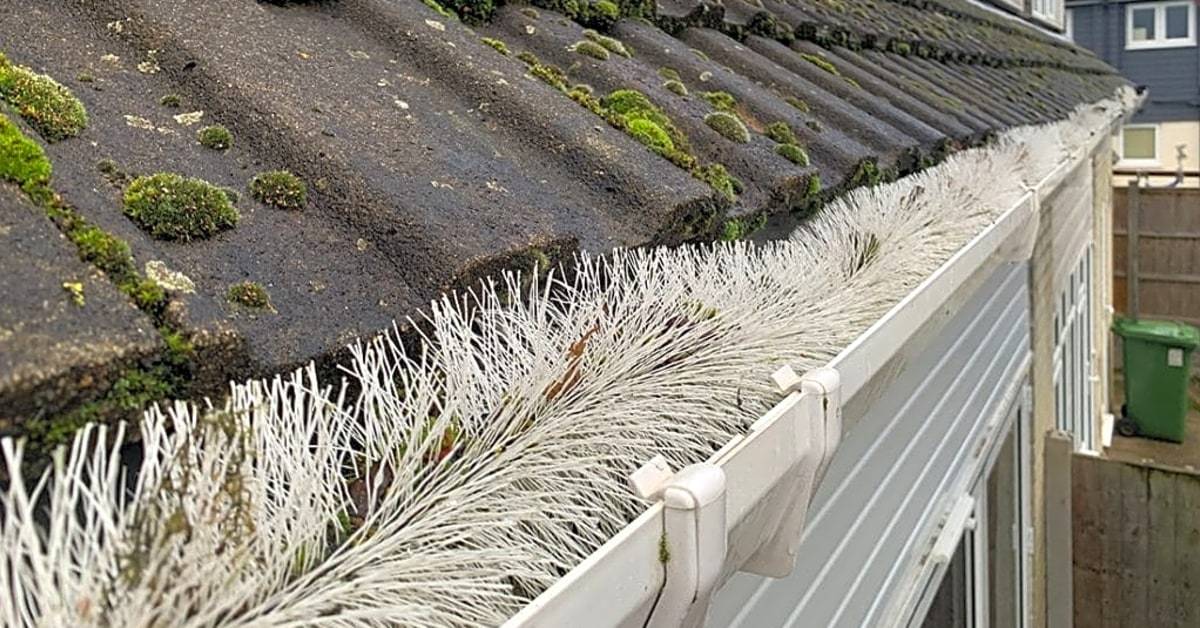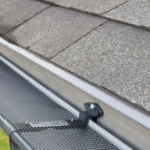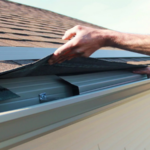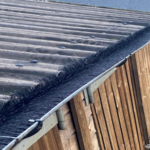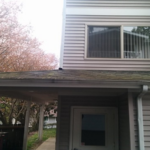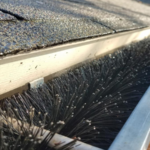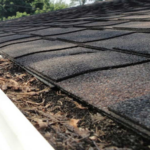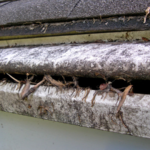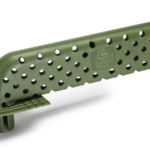Are you tired of constantly having to clean debris out of your gutter guards? We understand the frustration and time-consuming task that comes with maintaining your gutter system. But fear not, as we have compiled an informative guide on how to effectively remove debris from your gutter guards. By following our tips and tricks, you can save time and money on regular maintenance tasks while keeping your gutters clean and functioning properly. So, sit back, relax, and read on to discover the best ways to keep your gutters clear of debris.
With the fall season approaching, it’s important to ensure that your gutter guards are clear of any debris to prevent clogging and potential damage. Regular maintenance is crucial for the proper functioning of gutter guards, as their main purpose is to protect your gutters from leaves and debris. To achieve this, it’s essential to understand the different methods and tips for effectively removing debris from your gutter guards.
One method for cleaning gutter guards is by using a leaf blower. This is a quick and easy way to remove loose debris, such as leaves and twigs, from the surface of the guards. Simply aim the blower at the guards and blow away any debris that may be stuck on them. This method is best used when the debris is dry, as wet debris can be more difficult to remove.
Another method for cleaning gutter guards is by using a garden hose. This is a more thorough approach as it allows you to spray water directly into the gutters, flushing out any small particles or buildup that may be present. It’s important to use a high-pressure nozzle to ensure that enough force is generated to remove the debris. Additionally, you can attach a gutter cleaning tool to your hose for added convenience and efficiency.
If you prefer a more hands-on approach, there are also gutter cleaning tools specifically designed for removing debris from gutter guards. These tools usually have long handles and special attachments to help reach and remove debris from the guards without having to climb a ladder. They can also be useful for removing stubborn or hard-to-reach debris.
Aside from regular cleaning, another way to prevent debris buildup in your gutter guards is by installing gutter covers or screens. These act as an extra layer of protection and help to keep larger debris from entering your gutters in the first place. They can easily be installed on your own with the right tools and instructions, making them a great addition to your regular maintenance routine.
In conclusion, proper maintenance is key to ensuring the effectiveness of your gutter guards in protecting your gutters from debris. Regular cleaning using methods such as using a leaf blower, a garden hose, or a gutter cleaning tool can help keep your gutter guards clear and functioning properly. Additionally, installing gutter covers or screens can provide added protection and ease of maintenance. By following these tips, you can ensure that your gutters and gutter guards remain in good condition and continue to do their job effectively.
DIY Options
For those who prefer a more hands-on approach, there are plenty of DIY options for creating your own gutter guards using materials such as wire mesh or PVC piping. These can be cost-effective alternatives, but may not provide the same level of protection as professionally installed gutter guards.
Tips for Easy and Effective Cleaning
Cleaning your gutter guards can be a daunting task, but it doesn’t have to be. With these simple tips, you can easily maintain clean and functioning gutter guards throughout the fall season and beyond.
Regular Inspections
The first tip for easy and effective cleaning of your gutter guards is to conduct regular inspections. This means checking your gutter guards at least once a month to ensure that they are clear of any debris or buildup.
Use a Garden Hose
One of the easiest methods for removing debris from gutter guards is by using a garden hose. Simply spray water from the top of the gutter guard down to flush out any leaves, twigs, or other debris that may be stuck in the guard.
Hand Removal
If your gutter guards have a lot of buildup or larger debris, using your hands may be the most effective method for removing it. Make sure to wear gloves and carefully remove any debris that is clogging the guard.
Consider Gutter Guard Covers
To prevent debris from getting into your gutter guards in the first place, you may want to consider installing gutter guard covers. These covers can help keep leaves and other debris out while still allowing water to flow through.
Regular Maintenance is Key
Lastly, one of the most important tips for maintaining clean gutter guards is to make it a regular maintenance task. By checking and cleaning your gutter guards regularly, you can prevent clogs and potential damage to your gutters.
Types of Gutter Guards
When it comes to choosing the right gutter guard for your home, there are a variety of options available on the market. Some of the most common types include mesh screens, foam inserts, and brush guards. Each of these options has its own pros and cons, so it’s important to research and consider your specific needs before making a decision.
Mesh screens are the most popular type of gutter guard and are typically made from metal or plastic. They sit on top of the gutter and have tiny holes that allow water to flow through while keeping debris out. Mesh screens are relatively affordable and easy to install, making them a popular choice for homeowners.
Foam inserts are another option that is becoming increasingly popular. They are made from a porous foam material that allows water to pass through while blocking leaves and other debris. Foam inserts are easy to install and can be cut to fit any gutter size. However, they may need to be replaced more frequently than other types of gutter guards.
Brush guards are made up of bristles that sit on top of the gutter and allow water to flow through while catching debris. They are typically made from durable materials such as polypropylene or stainless steel and can last for many years. However, they may not be as effective at keeping smaller debris out as other types of gutter guards.
When choosing the right gutter guard for your home, it’s important to consider factors such as cost, ease of installation, and effectiveness at keeping out debris. Ultimately, the best option will depend on your specific needs and budget. Regular maintenance and cleaning of your gutter guards is also important in order to ensure their effectiveness and prevent any potential damage to your home. By keeping your gutters clear of debris, you can protect your home from potential water damage and save yourself the hassle of frequent cleanings.
In conclusion, regular maintenance and cleaning of your gutter guards is crucial for preventing clogs and potential damage to your gutters. By following the tips and methods discussed in this article, you can effectively remove debris from your gutter guards and ensure they continue to function properly. Not only does this save you time and effort in the long run, but it also helps to protect your home from potential water damage.
